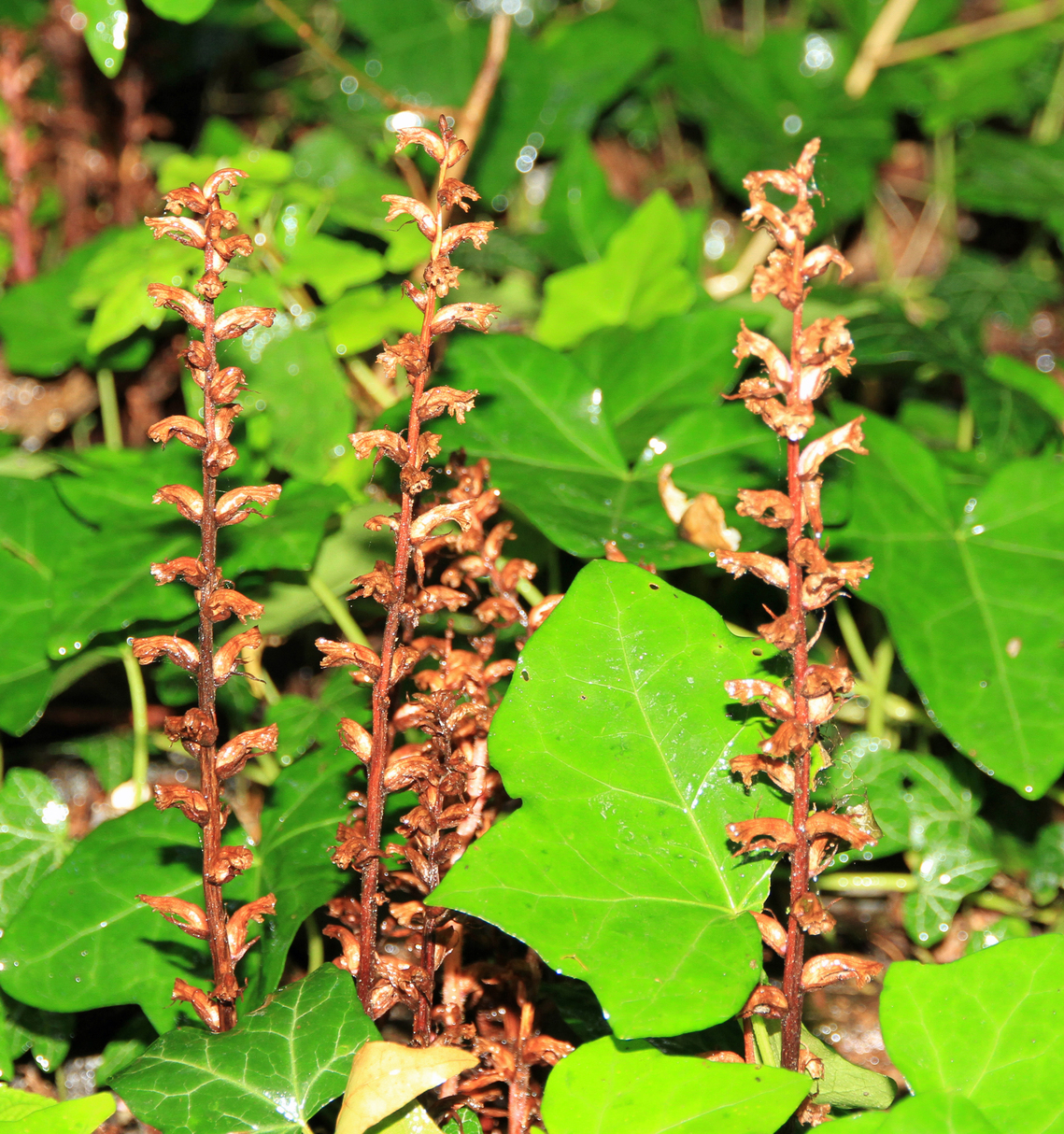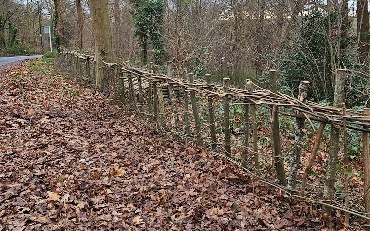Trees
Our 17 acre Common is a predominantly mature oak, ash, field maple and hornbeam woodland with several ancient and veteran trees. More than 200 species have been recorded, including woodland and grassland species. There are three layers of the woodland, namely the ground cover, the shrub layer, and the canopy, which is composed of both native (hornbeam, ash, English oak, field maple) and non-native (horse chestnut, sycamore) species. The mature canopy provides unique micro-habitats of glades and coppice woodland, providing habitat for songbirds, bats and invertebrates.
A malus (apple) tree blossoms at Petersham Common Woods in March
Flowers
We regularly plant wildflowers to encourage bees and other invertebrates.
For example, in 2021/22 we added 600 'in the green' native bluebells (Hyacinyhoides non-scripta) and 300 red campions to recently prepared sweet chestnut and hazel coppice glades.
Bluebells typically flower in April/May, followed by red campion and the beautiful blue bi-annual wood forget-me-not. These help to diversify the woodland herbaceous layer and to provide vital food sources for invertebrates. As the years pass by and the glades mature we are increasingly concerned that our native bluebells are thrwatened with cross pollination with the stronger Spanish bluebell (Hyacinthoides hispanica). Indeed, a new hybrid species is establishing itself across England that is weakening the gene pool of England's native stock.
Geranium Robertianum (herb-Robert) in bloom at the Common
Other Flora
Petersham Common has one of the highest concentrations of ivy broomrape in the UK, which is an unusual plant having no chlorophyll and living a parasitic life off ivy. The flower appears in mid to late summer.
The native blackthorn (Prunus Spinosa), with its unforgiving thorns of upto 2 inches long, is classified as a small tree and we value it as a native understory tree. In spring, blackthorns are one of our first trees to flower on bare stems before they leaf. In autumn, their small, grape sized berries are used across the country for sloe based liqueur. Please note foraging is not allowed on our Common.
In 2024 we started to lay a hedgerow along Star and Garter Hill using 3000 native (sapling) trees planted in 2016/17 with the help of Russell School, Ibstock School Duke of Edinburgh students and the Deutsch Schule London. Hedgerow laying is an ancient heritage skill that is highly beneficial to native songbirds; is aesthetically pleasing to many people; encourages native songbirds to nest; and will become a valuable habitat for native animals.
Fungi are also welcome part of our protected natural habitat, and are vital to the woodland’s ecosystem.
Ivy Broomrape (Orobanche hedere) along Dysart Path
Hedgerow along Star and Garter Hill
We have tried to capture some of the highlights of the Common on this website, but a more detailed report of the history and ecology of the Common was published by F.N. Hepper in 2006 and is available at Richmond Reference Library.


